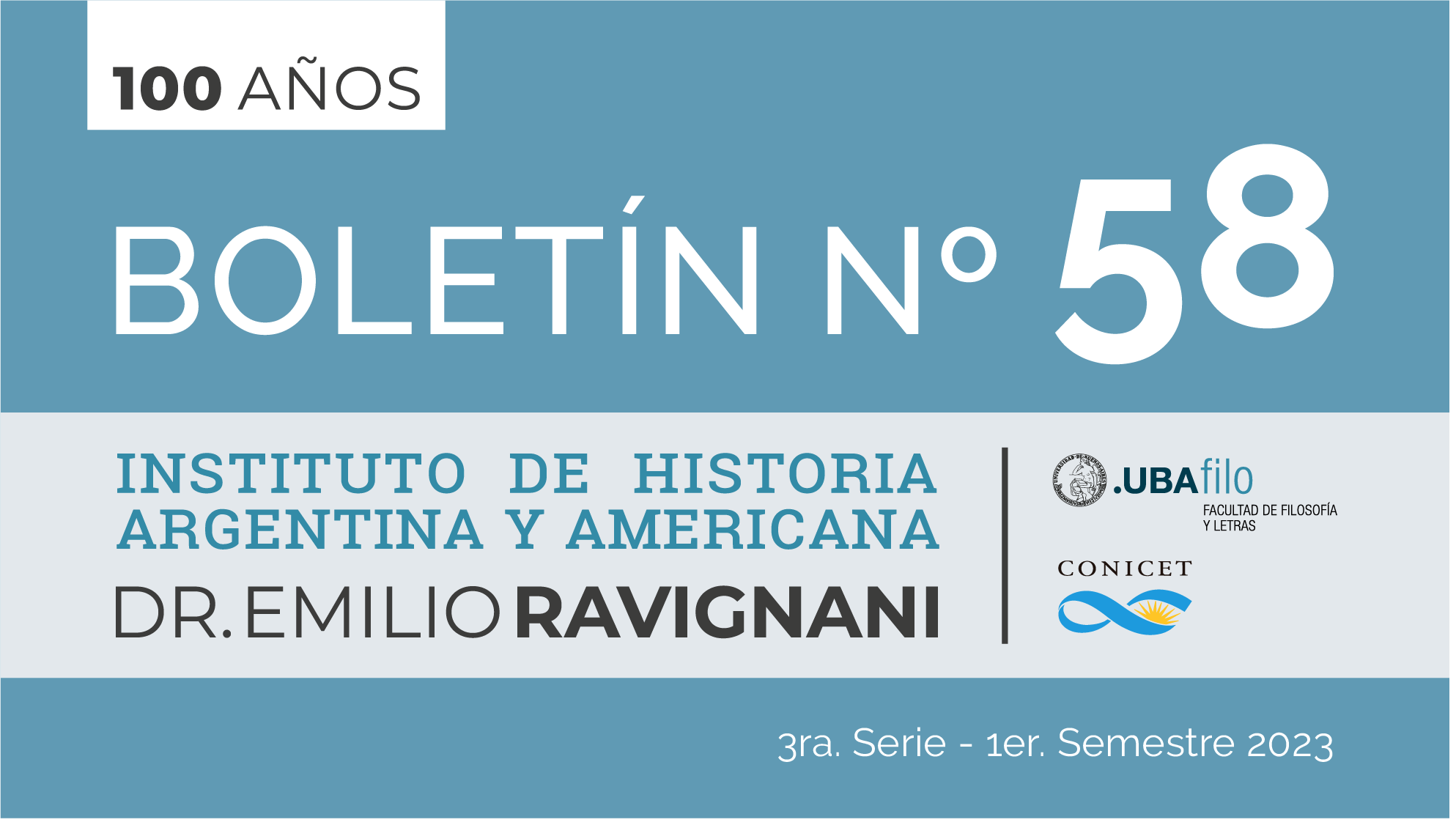Explaining the human development gaps in Argentina
Abstract
This essay puts Pablo Schiaffino’s contribution in the broader framework of the history of human development in Argentina. It brings recent research in real wages and adult heights as indicators of income and health. Heights and wages both align with Schiaffino’s ranking of regions and reinforce the notion that the gaps in human development were enormous in Argentina in the late 19th and early 20th centuries. The essay concludes with some suggestions for future research emphasizing the study of the institutional arrangements of public education policies and considering the role of credit scarcity in human capital formation.Downloads
References
Aráoz, M. F., Nicolini, E. A. y Talassino, M. (2020). Growth and Convergence Among Argentine Provinces Since 1895. En D. A. Tirado-Fabregat, M. Badia-Miró y H. Willebald, Time and Space (pp. 65-95). Palgrave Studies in Economic History. Cham: Springer International Publishing. https://doi.org/10.1007/978-3-030-47553-6_4
Djenderedjian, J. (2020). El nivel de vida en un país naciente y diverso. Salarios, precios de alimentos y cobertura de una canasta de subsistencia en las 14 provincias de Argentina, 1875. Investigaciones de Historia Económica. https://doi.org/10.33231/j.ihe.2020.01.003
Ladeuix, J. y Schiaffino, P. (2020). El Gigante con Pies de Barro: ¿fue la Argentina realmente rica? El capital humano durante la primera globalización en una perspectiva comparada. Revista de Historia Economica - Journal of Iberian and Latin American Economic History, 18, pp. 1-35. https://doi.org/10.1017/S0212610920000208
Ladeuix, J. y Schiaffino, P. (2020). Riche comme un argentin: desigualdad educativa en la Argentina de la belle époque. Investigaciones de Historia Económica, 16(3), pp. 57-75. https://doi.org/10.33231/j.ihe.2020.03.003
Maier, C. S. (2015). Recasting Bourgeois Europe: Stabilization in France, Germany, and Italy in the Decade after World War I. Princeton: Princeton University Press.
Miller, N. (2020). Republics of Knowledge Nations of the Future in Latin America. Princeton: Princeton University Press.
Mumford, J. (1994). Encouragement of Local Control in National Education, New South Wales, 1848‐1866. Journal of Educational Administration, 32(4), pp. 53-65.
Prados de la Escosura, L. (2015). Human Development as Positive Freedom: Latin America in Historical Perspective. Journal of Human Development and Capabilities, 16(3), pp. 342-73. https://doi.org/10.1080/19452829.2015.1056644
Robson, K. L. (2013). Sociology of Education in Canada. Toronto: Pearson Canada. https://ecampusontario.pressbooks.pub/robsonsoced/
Salvatore, R. D. (2009). The Regional Dimension of Biological Welfare: Argentina in the 1920s. Historia Agraria, 29.
United Nations Development Program. The next Frontier: Human Development and the Anthropocene, Human Development Report 2020 (New York, 2020).
Copyright (c) 2022 Boletín del Instituto de Historia Argentina y Americana Dr. Emilio Ravignani

This work is licensed under a Creative Commons Attribution-NonCommercial 4.0 International License.
The copyright is transferred to the Boletín, but the authors may retrieve them and reproduce their work in other media or formats by means of a written request to the Editorial Committee. In such cases, the Boletín will be cited as the first publication of the work.
The works are licensed under a Creative Commons Attribution-NonCommercial 4.0 International License, which allows others to share the work with an acknowledgment of their authorship and initial publication in this journal.
Also, by written request to the Editorial Committee of the Boletín, the authors may separately establish additional agreements for the non-exclusive distribution of the version of the work published in this journal (for example, placing it in an institutional repository or publishing it in a book), with an acknowledgement of its initial publication here. No commercial uses are allowed.



















